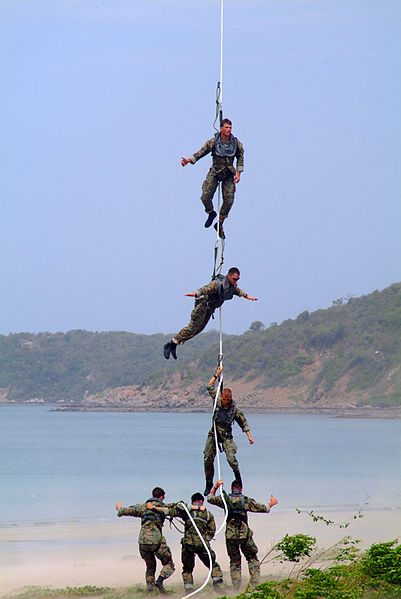Long-range surveillance (LRS) teams were elite, specially-trained surveillance units of the United States Army employed for clandestine operation by Military Intelligence for gathering direct human intelligence information deep within enemy territory. Classic LRS employment is to infiltrate deep into enemy territory, construct hide and surveillance sites, and provide continuous surveillance/special reconnaissance of an intelligence target of key interest.
A long-range surveillance team from the 82nd Airborne Division in Afghanistan during 2007
Staff Sgt. Anthony Purnell, a soldier from Echo Company, 51st Infantry Company, Long-Range Surveillance, V Corps demonstrating a ghillie suit in 2004
Special reconnaissance (SR) is conducted by small units, such as a recon team, made up of highly trained military personnel, usually from special forces units and/or military intelligence organizations. Special reconnaissance teams operate behind enemy lines, avoiding direct combat and detection by the enemy. As a role, SR is distinct from commando operations, but both are often carried out by the same units. The SR role frequently includes covert direction of airstrikes and indirect fire, in areas deep behind enemy lines, placement of remotely monitored sensors, and preparations for other special forces. Like other special forces, SR units may also carry out direct action and unconventional warfare, including guerrilla operations.
US Navy SEALs conducting special reconnaissance in Afghanistan, 2002
US Marines from 3rd Reconnaissance Battalion practicing Special Purpose Insert and Extraction (SPIE), 2006.




